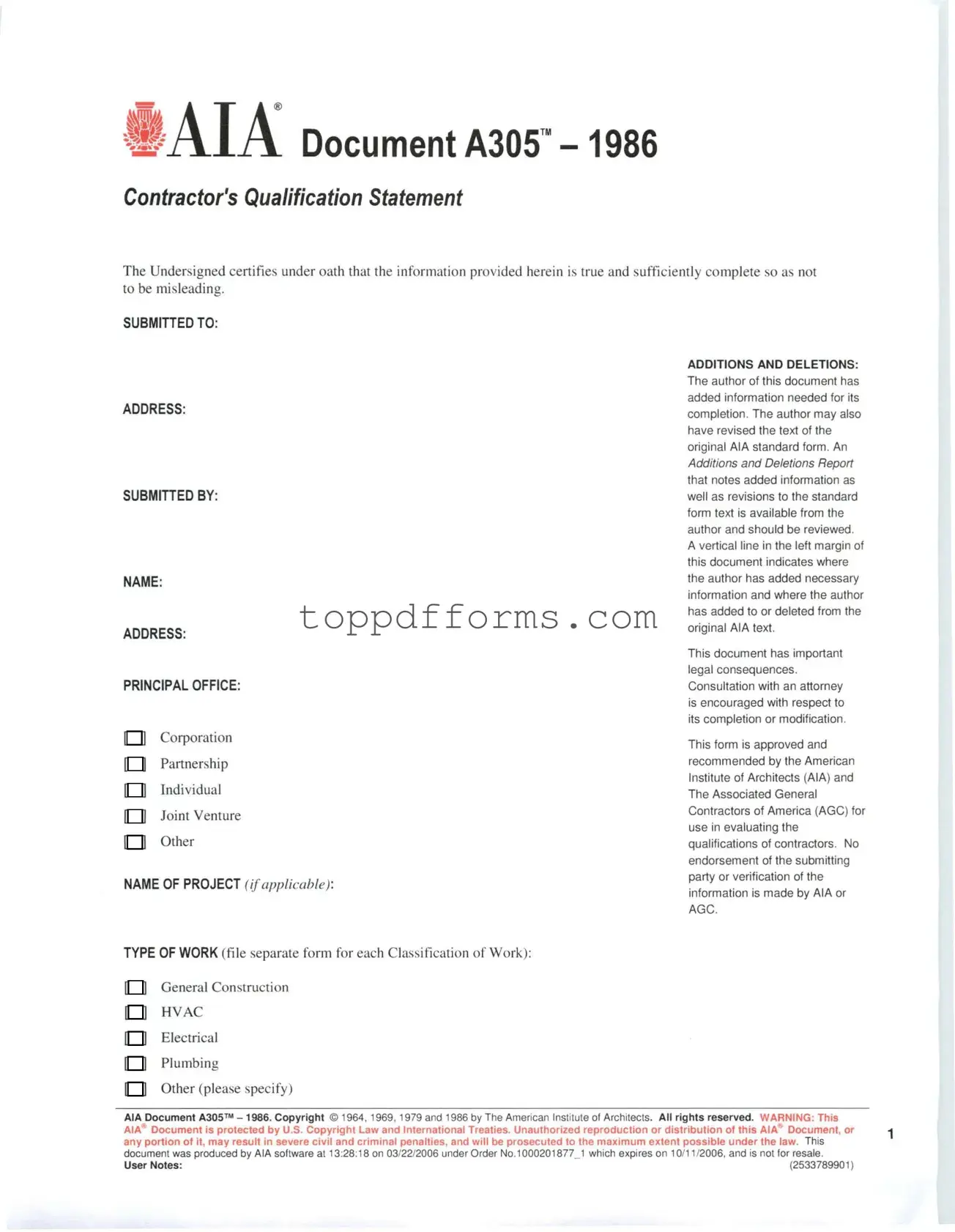What is the AIA A305 form?
The AIA A305 form is a document created by the American Institute of Architects. It is primarily used for contractor qualifications. This form helps contractors provide essential information about their experience, financial status, and ability to complete projects. It serves as a tool for owners and architects to assess a contractor’s qualifications before awarding a contract.
Who should use the AIA A305 form?
The AIA A305 form is designed for contractors seeking to demonstrate their qualifications to potential clients. General contractors, subcontractors, and construction managers often fill out this form. It is particularly useful when bidding on projects that require detailed information about a contractor’s past performance and capabilities.
What information is required on the AIA A305 form?
The form requests various details, including the contractor's business structure, experience, financial information, and references. Contractors must provide information about their previous projects, including project size, scope, and completion dates. This comprehensive data helps clients evaluate the contractor’s suitability for the job.
Is the AIA A305 form mandatory?
Using the AIA A305 form is not legally required. However, many owners and architects prefer it as a standard method for assessing contractor qualifications. If a project requires this form, contractors must complete it to be considered for the job. Always check the specific requirements for each project.
How can contractors benefit from using the AIA A305 form?
By using the AIA A305 form, contractors can present their qualifications in a clear and organized manner. This form allows them to showcase their experience and capabilities effectively. A well-completed A305 can enhance a contractor’s chances of winning bids and establishing trust with potential clients.
Can the AIA A305 form be modified?
How long does it take to complete the AIA A305 form?
The time it takes to complete the AIA A305 form can vary based on the contractor's experience and the complexity of their projects. Generally, it may take a few hours to gather the required information and fill out the form. It is advisable to set aside sufficient time to ensure accuracy and completeness.
Where can I find the AIA A305 form?
The AIA A305 form can be obtained from the American Institute of Architects’ website or through various construction industry resources. It is often available for download in PDF format, making it easy to print and fill out. Ensure you are using the most current version of the form for your submissions.
What should I do if I have questions about the AIA A305 form?
If you have questions about the AIA A305 form, consider reaching out to a construction attorney or a professional familiar with the construction industry. Additionally, many resources and guides are available online to help clarify any uncertainties regarding the form's completion and requirements.
